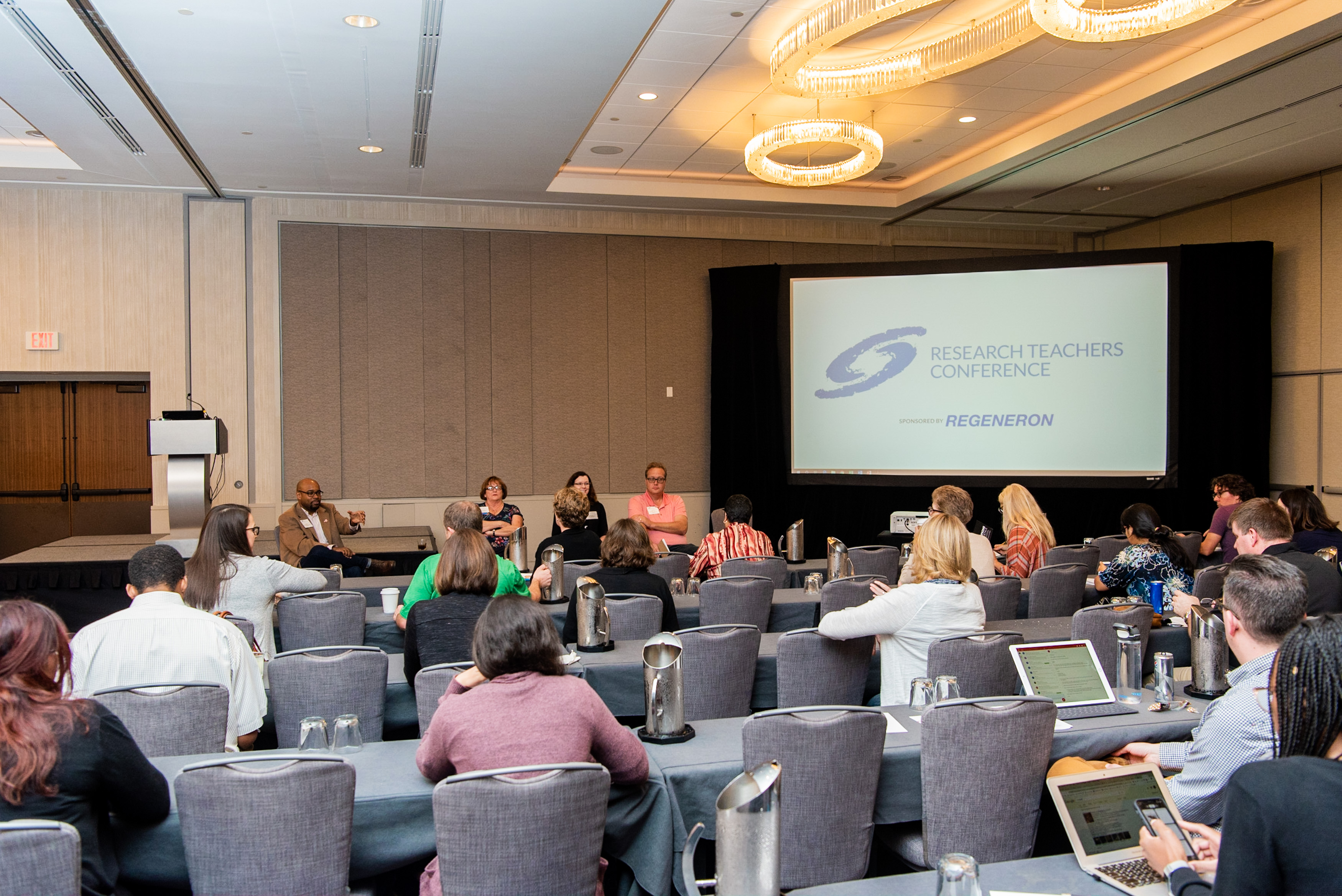Diversity in STEM starts with teachers

Making STEM accessible to students from groups typically underrepresented in the sciences is no easy feat; just ask the teachers who attended the Society for Science & the Public’s Research Teachers Conference. Janet Waldeck, a teacher from Pittsburgh Allderdice High School in Pennsylvania, attended this conference two years ago. “The insights I walked away with transformed my classroom,” she said. This year, Janet was invited back to share what she learned.
Janet, along with fellow teacher Michelle Flannory from Elmont Memorial High School in New York, co-led a break-out session on strategies for recruiting and retaining underrepresented and low-income students. Recruiting begins with helping students make the connection between themselves and STEM professions. As Michelle puts it, “every child wants to be heard.” Students must first understand where they fit in the bigger picture to realize where and how they can contribute.
Another challenge to getting students involved in STEM education has to do with debunking the idea that being a nerd and being cool are mutually exclusive. They may also be hesitant because they don’t feel science fairs and the people involved look like them. To combat these misconceptions, Janet and Michelle connect with their communities to identify role models for their students, and they have their high school students volunteer at elementary school science fairs to foster change systemically.
“One of the most important pieces of advice I picked up was to build communities vertically, looking at personal interactions with younger as well as older individuals that share an interest in STEM,” Janet recounted. “Michelle and I share the goal of pulling our students into a community of STEM professionals that resemble them and making them realize that they belong to this community. “

To help students dream forward, Janet seeks out PhD candidates as role models. “They are old enough to have started the ball rolling, yet young enough to give my students the idea that this could be them one day,” she explained. She has a tradition of asking the graduate students to bring with them two power point slides: one that shows them involved with their research and one that shares a personal side. They then return to mentor her research students and assist in the school’s annual research symposium.
Creating a network of resources is crucial for student success as well. For example, both teachers work hard to find and maintain solid relationships with research labs which support student growth. They visit the labs regularly, interacting with both the directors and their students, and contribute letters of support for these programs. “I also try to get on advisory boards for youth science programs in my community,” Janet added. Doing so provides her with a platform to work with community members and create pathways that allows more students to gain access to STEM opportunities. Michelle makes it a point to incorporate public speaking into her curriculum whenever possible: through class assignments, at faculty meetings and at parent-teacher organization meetings. This boosts her students’ confidence and helps them find their voice.
“As teachers, our specialty is kids,” concluded Janet and Michelle at the end of their session. While attaining diversity in STEM fields may not be easy, these teachers advanced that goal by sharing their best practices that could be applied in other classrooms.



